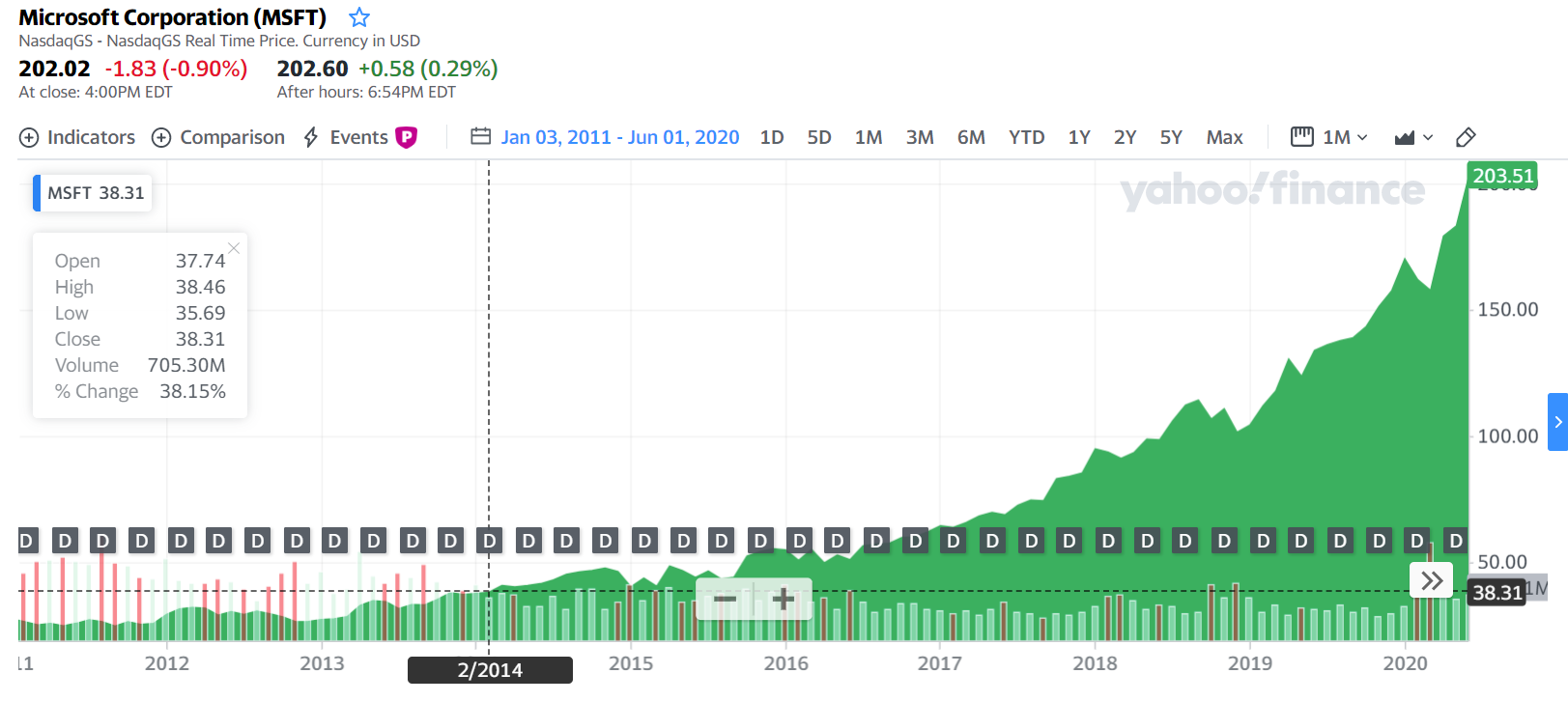When do you know it’s time to reinvent your business?
Original Publish Date: July 30, 2020
Companies like products follow a similar life cycle. The typical evolutionary stages are (1) start-up (launch), (2) rapid growth, (3) maturity, (4) decline (sunset). Even the post-decline options are similar: reinvention (rebirth) or death. With products, reinvention usually means replacement by a new product or new iteration.
I share this similarity to highlight a key difference. We’re able to identify, in a relatively conclusive manner, when a product starts the slow transition from the maturity stage to decline. Yet, we somehow have a hard time identifying conclusively when a company undergoes this same transition until it’s too far into the decline stage. Normally too far into the decline stage that any reinvention plan can’t save the company.
Are there warning signals that show the slow transition of a company into the decline stage?
Enter Microsoft to offer us a timely case study to study this transition. As of July 2020, Microsoft along with Facebook, Alphabet, Apple, Amazon “make up about 22% of the S&P 500 index”. Additionally, YTD 2020, these five companies have “increased in value by an average of 35%, while the remaining 495 firms in the S&P 500 are down 5%”.
Source: Yahoo Finance
To offer a milestone - Satya Nadella took over as the CEO back in Feb 2014. The chart above also shows the substantial increase in Microsoft’s stock price after he took control. One might say that Microsoft has reinvented itself over the last 5-6 years. The journey of reinvention wasn’t always smooth for the company.
I spent some time reviewing Nadella’s challenges through multiple news reports and his own personal account in “Hit Refresh”. Microsoft’s experience offers us a template of indicators that shaped Nadella’s decision to push for the company’s reinvention.
Try reviewing these indicators while thinking about your own company. Is your company on the slow transition into the decline stage?
Falling behind on major shifts in customer behavior or industry trends at large – Microsoft missed capitalizing on the shift to mobile, the growth of online search and advertising business. On top of that, it was trying to stay relevant in gaming, cloud services business, smartphones, and tablets.
Revenue from cash cows are flattening – PC sales were slowing down by 2008 and Microsoft’s revenue from its perennial cash cow had leveled off.
Unnatural volatility or growth slowdown in the company stock price – Even though Microsoft’s stock was considered a “blue-chip investment”; the stock price showed very little growth by the time Nadella took over as the new CEO.
Ever-growing internal barriers to innovation – Think bureaucracy and multiple layers of decision-making working against the company’s own interest.
Disagreements on every business move – Folks that were part of Microsoft’s traditional server business were deliberately second guessing the potential of the cloud business and holding back any progress in that arena.
Rushing certain deals or acquisitions to catch up to competitors – Microsoft’s failed acquisition of Nokia’s mobile business was a last-ditch attempt to make something out of the mobile trend.
Sticking to a “fast follower” strategy in every scenario – Nadella points to overconfidence on Microsoft’s capability to “fast follow a competitor” as a crucial reason it hardly thought about disrupting its prevailing business models.
Toxic growth in internal politics – It’s hard to get rid of office politics altogether, but Microsoft’s lack of co-operation across teams and consensus on purpose led to a substantial drop in company morale, horrible employee feedback, a general lack of grand ideas and creativity.
Lack of empathy for customers – Nadella felt that Microsoft lost sight of the “unarticulated and unmet needs” of its customers.
“Every person, organization, and even society reaches a point at which they owe it to themselves to hit refresh – to reenergize, renew, reframe, and rethink their purpose.” – Satya Nadella, CEO of Microsoft
Is it time to reinvent your business?
We may not have a magic formula to accurately estimate the appropriate time to reinvent any business. Microsoft’s experience offers a series of potential warning signals to review for your own company. The challenge is not to wait too long to take on reinvention and lose any chance of survival once the company is deep into its decline stage.

